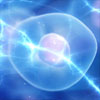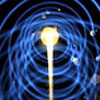The Electrical Nature Of The Solar System
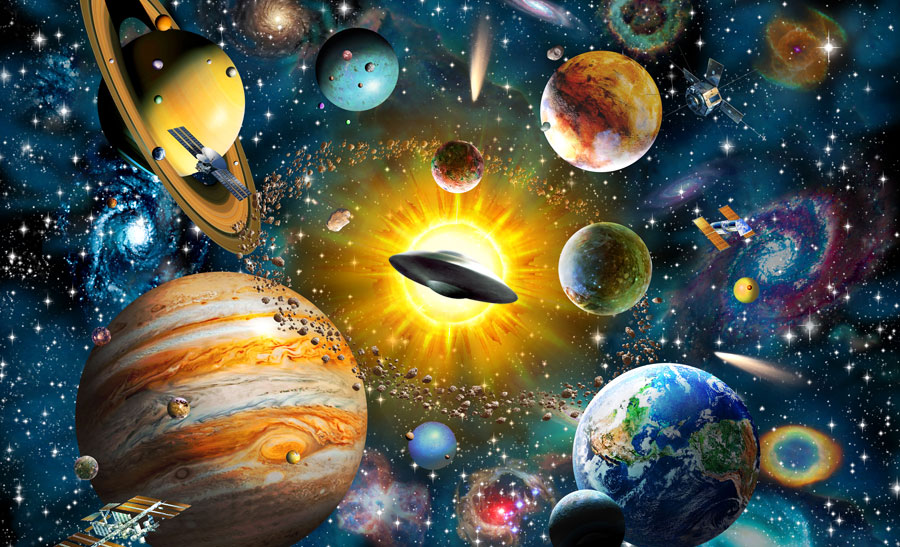 Or How Life May Exist On Every Planet In The Solar System
Or How Life May Exist On Every Planet In The Solar System
by George Adamski
One of the most frequent problems encountered when giving a lecture on space is the insistence of scientists that the outer planets are devoid of light and heat. Their objection is  that radiation from the sun is so weak at these vast distances that Pluto, for instance, would be at absolute zero or close to it, with a frozen atmosphere, and totally incapable of supporting life-forms of any type.
that radiation from the sun is so weak at these vast distances that Pluto, for instance, would be at absolute zero or close to it, with a frozen atmosphere, and totally incapable of supporting life-forms of any type.
This is the main argument brought against me when doubt is expressed about my meeting human beings from some of these other planets.
The first thing to realize is that the sun does not emit light and heat in the form we observe here on Earth. Radiation from the sun does not manifest itself as light and heat until it penetrates the atmospheres of the planets themselves. Outer space is devoid of light as we know it. The light in outer space is a cold light caused by the phosphorescence of vast clouds of particles and gases responding to the radiation given off by the sun. To a human observer, outer space looks like a dark, vast void, filled with billions upon billions of tiny specks of multicolored light. All of these tiny lights are in a state of continuous motion and activity.
Radiation from the sun is composed of ultra-violet light, hard and soft X-rays, cosmic and gamma rays. The greater portion of these destructive rays are filtered out by a planet’s ionosphere and upper atmosphere. The innumerable, infinitesimal particles within a planet’s atmosphere emit visible light when excited by the sun’s filtered radiation. The earth absorbs these rays, and in return gives off infra-red energy. Energy thus given off activates the atmosphere immediately surrounding the planet, thereby generating heat that keeps the planet warm.
It is easy to see how this energy from the sun can encompass our earth. After all, we are only 93 million miles from the sun. But what about the planets that are more remote from the sun?
According to standard textbooks, the radiation form the sun decreases inversely with the square of distance. In layman’s language, this means that if you double the distance from the sun, the radiation would be only one-fourth as great. If you double the distance again, the radiation would be only one-sixteenth as great, and so on. If the sun’s radiation actually decreases at this rate, then the outer planets must indeed be in a state of perpetual coldness.
What, then, is the answer? I know from personal experience that these outer planets have thriving civilizations, with climates and atmospheres similar to our own earth. The larger planets, such as Saturn and Jupiter, have much lower gravity than has been assumed by our scientists. Therefore, our explanation of gravity must be in error in some way.
Our main problem now is not gravity but climate. How do these planets receive enough energy from the sun to exist in a similar state to Earth?
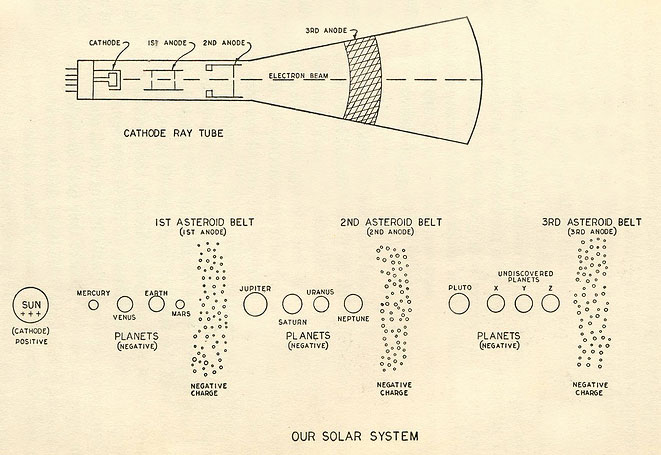 A clue to this answer is found in the vacuum tube; more specifically it is found in the cathode ray tube. This tube, abbreviated CRT, is found in the ordinary home television receiver. In it we have a heater that raises the temperature of a cathode to a point at which it gives off electrons in great quantities. These electrons are negative in nature. High positive voltages are supplied to various grids and anodes in the tube.
A clue to this answer is found in the vacuum tube; more specifically it is found in the cathode ray tube. This tube, abbreviated CRT, is found in the ordinary home television receiver. In it we have a heater that raises the temperature of a cathode to a point at which it gives off electrons in great quantities. These electrons are negative in nature. High positive voltages are supplied to various grids and anodes in the tube.
There are two types of electricity: positive and negative. The electron is negative and its counterpart, the proton, is positive. Just at the north pole of a magnet will attract the south pole of another magnet, the electrons attract the protons. Similar poles of magnets repel each other and so do similar charges of electricity. Likes repel; unlikes attract.
The high positive voltages on the grids and anodes of the CRT attract the electrons from the cathode. The electrons are pulled toward the anodes with great speed, but, due to the type of construction of these anodes, most electrons rush right on through toward the next one. Theoretically, this could be continued for great distances by use of several different anodes and high positive voltages.
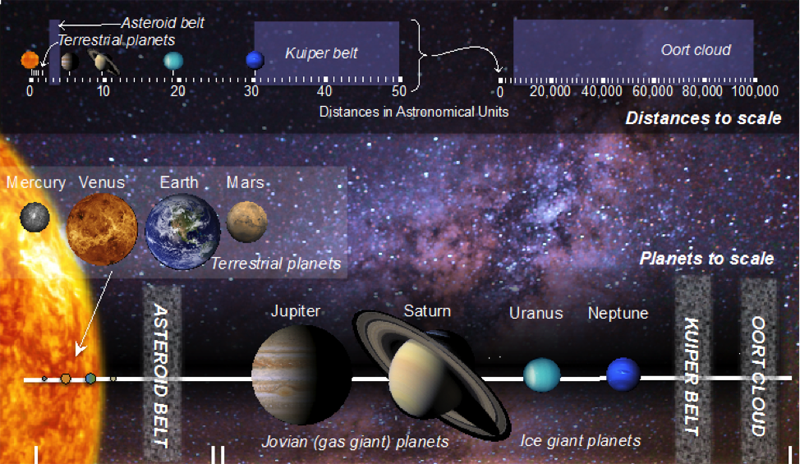 Mercury, Venus, Earth and Mars are close enough to the sun to get good radiation. With the planets beyond Mars it is a different situation. At these distances the sun’s radiation has started to diminish. At this time it comes under the influence of the tremendous attracting force generated by the first asteroid belt which totally envelops the central portion of our solar system. The negative charge of the asteroid belt is great enough to attract the particles from the sun and pull them back up to their original speed. Because this belt is grid-like in construction, with thousands of openings and paths, similar to a window screen with air going through, the particles dash on through and enter the influence of the planets beyond.
Mercury, Venus, Earth and Mars are close enough to the sun to get good radiation. With the planets beyond Mars it is a different situation. At these distances the sun’s radiation has started to diminish. At this time it comes under the influence of the tremendous attracting force generated by the first asteroid belt which totally envelops the central portion of our solar system. The negative charge of the asteroid belt is great enough to attract the particles from the sun and pull them back up to their original speed. Because this belt is grid-like in construction, with thousands of openings and paths, similar to a window screen with air going through, the particles dash on through and enter the influence of the planets beyond.
These, being negative in themselves, as are all planets, attract from space the positive particles they need for light and heat. At the same time infinite numbers of similar particles rush on past and are attracted by a second asteroid belt between Neptune and Pluto, where the process is repeated all over again. This furnishes Pluto and the last three planets with normal light and heat. (Twelve planets in all exist in our system, according to the space travelers.)
A third asteroid belt is beyond the twelfth planet, serving a dual purpose of blending space within our system with that of neighboring systems. At the same time it serves as a protective filter, comparable to the ionosphere encompassing a planet.
We might summarize by saying: The two inner asteroid belts gather rays from the sun and speed them on through space. They equalize, so to speak, conditions within the system from the area of Mercury right on to the outer reaches of our solar system, while the third keeps our system, as a unit, in balance with those beyond. Because of this cosmic activity, of which we on Earth have not previously been aware, we could go to any of our earth-type planets in the solar system and enjoy a climate and atmosphere similar to our own.
With the asteroid belt, basically negative in nature, attracting sun rays varying in length, speed, width, and charge, a condition is set into action comparable to an alternating current in electricity. Some of the positive particles are trapped within the asteroid belt, while others zip right on through to radiate through space beyond. The law of attraction and repulsion permits a state of cohesion to take place between some of the particles within the belt, building larger forms, while a major percentage remain in their natural state. Particles of many sizes thus created are caused to constantly act upon one another in energy and matter alike. This very action, while building some forms, also disintegrates other forms by separating the particles of which they are composed.
Serving as Nature’s dielectric in this manner, the asteroid belt, I have been told, is the womb of the Cosmos out of which planets are born. When a planet reaches its peak of service in a system and starts on the path of decline and disintegration, a body is drawn from the asteroid belt by the magnetic influence of that planet’s orbit to maintain the perfect balance of the system. So, as the old planet disintegrates, a new one is built to replace it. On a larger scale, systems go through the same cycle of birth, growth and extinction and follow the pattern as do all forms in Nature.
In using the term “extinction,” I am referring to matter going back into the gaseous or invisible state. It is not destroyed; it is only changed in form. A good example of this is seen when ice becomes water or evaporates into vapor.
After matter has returned to its original or gaseous state, it is free to start the cycle all over again. It may travel across interplanetary distances and become part of another planet or it may return to become a part of its original planet, serving in the construction of new forms.
With this continuous interchange between the planets, it is only natural to find each planet has similar materials in its make-up and similar plant and animal life on its surface…with few exceptions.
Billions of giant Milky Way systems or galaxies, like our own, are known to exist throughout the vast reaches of the never-ending Cosmos. Toward the center of these giant systems so far observed by our telescopes are found the newer and hotter stars. As the galaxy expands outward, these stars cool and planetary systems are born.
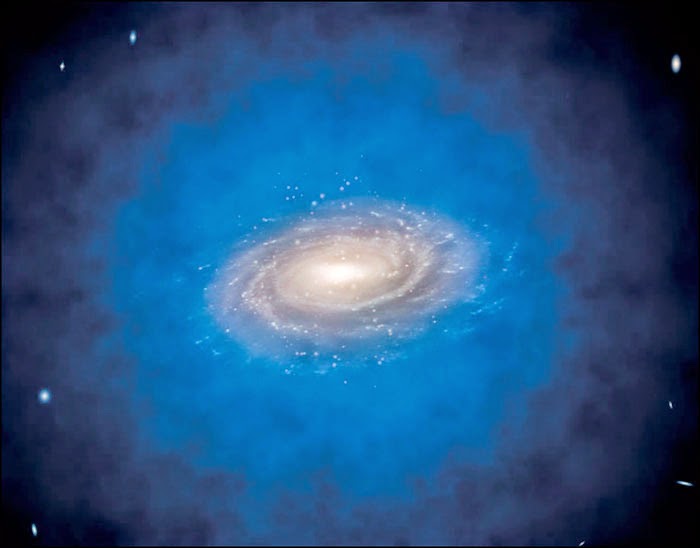 In these cooler outer edges are billions of life-supporting planets. Here also are vast clouds of oxygen and hydrogen spreading out over thousands of light years of distance. This is readily apparent from examination of recent color photographs taken with the 200-inch telescope at Mount Palomar. Made with a newly developed super-color film, these photographs show great bluish clouds of oxygen, and the reddish clouds of hydrogen existing throughout about 65 percent of most observable galaxies. The only area where these gases are not apparent is in the hot nucleus of the galaxy itself.
In these cooler outer edges are billions of life-supporting planets. Here also are vast clouds of oxygen and hydrogen spreading out over thousands of light years of distance. This is readily apparent from examination of recent color photographs taken with the 200-inch telescope at Mount Palomar. Made with a newly developed super-color film, these photographs show great bluish clouds of oxygen, and the reddish clouds of hydrogen existing throughout about 65 percent of most observable galaxies. The only area where these gases are not apparent is in the hot nucleus of the galaxy itself.
In our Solar System our sun is only one of a group of some 100,000 million stars (100 billion stars). Several hundred thousand inhabited planets could easily be in existence in our Milky Way galaxy alone.
Imagine if you can this pattern of suns and their associated planets multiplied billions of times, extending without beginning or end!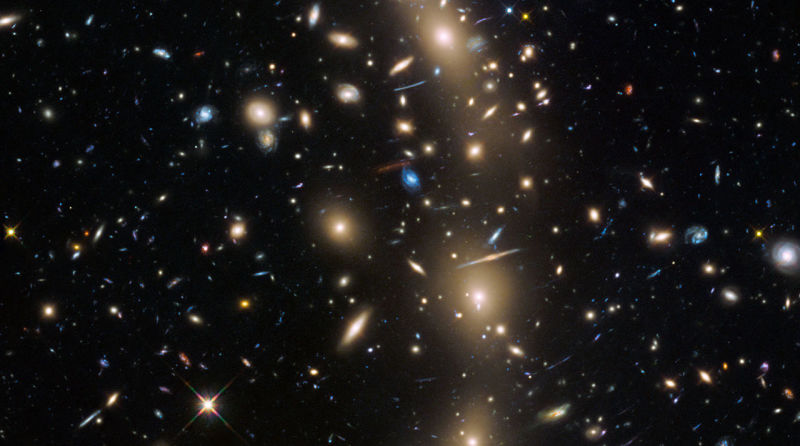
Man and his ego has said that our earth is the center of this vast array. He has refused to consider the possibility of our planet not being unique in the Cosmos. Now he is being forcibly awakened…first by friendly visits from our neighbors, whose interplanetary ships have been seen moving through our atmosphere and over every nation in our world, and now by our own space explorations.
All of these wonders are awaiting us as we slowly measure our way step by step into outer space, of which we know so little. Already many ancient but accepted theories have been cast aside. As the Cosmos lies before us, understanding extends unlimited to the seeking mind, as did new lands to our pioneers of old. There were the pioneers of Earth. Today we are pioneers of space with its ceaseless activity and endless wonders…worlds upon worlds…expressions of the one Infinite Creator.
Excerpt from Behind The Flying Saucer Mystery
Posted in Life On Other Worlds, Science For The New Age, UFOswith comments disabled.


